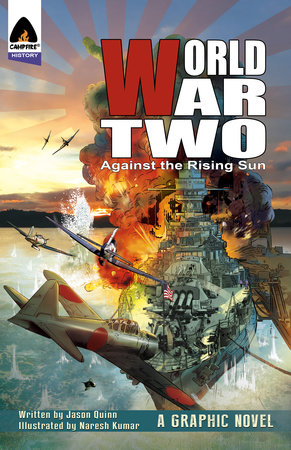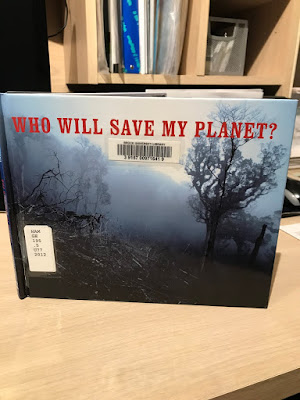Reading Blog
It is evident that a large number of students disliked reading about history in elementary school. I know I did. Going back to my elementary school days, I had always found reading about history really boring. I especially remember in grade 7 and 8 going to my rotary teacher’s classroom, opening up that dark blue, dull, bland history textbook and reading about Confederation. Talk about BORING!!! We did not watch one single video, listen to a single audio clip, or read a graphic novel, nothing. Every history class we would always just read from that boring textbook and never take different approaches to learn the subject.
Thankfully I found my love for history and everything it has to offer in high-school and during my undergrad in university. I was exposed to several different resources such as graphic novels, videos, images, timelines, artifacts and much more!
Throughout this blog, I will list the three resources that helped find my love for reading history. I will also address the importance for teachers to implement such resources into their regular classroom routines when assigning readings for history.
Throughout this blog, I will list the three resources that helped find my love for reading history. I will also address the importance for teachers to implement such resources into their regular classroom routines when assigning readings for history.
Resource 1: Graphic Novels (World War Two: Against the Rising Sun)
When it comes to reading about history, there are numerous effective ways of taking that approach for students to enjoy. One of the ways I believe helped find my love for reading about history was graphic novels. Having said this, in the tenth grade, my history teacher introduced us to graphic novels on World War 2. We were assigned to write a report about the content within the graphic novel and the historical significance obtained from it. I vividly remember postponing my math homework just to read my World War 2 graphic novel. I was addicted, the graphic novel is called World War Two: Against the Rising Sun. It was completely different, but was an effective approach to reading and learning about history, a way I have never thought of before.

The visuals and dialogue within the graphic novel were in great detail, making it as if you were apart of this historical scene in 1945. I was eager to learn more about the topic that I began to research different war heroes and famous battles that were mentioned in the graphic novel. However, it was not just me, my entire class loved reading them as well.
Overall, you don’t need a boring old textbook to learn about people and events in other eras, and time periods. These days, students can discover exciting history within graphic novels. This popular blend of storytelling and art makes history come alive that is simple to follow using illustrated panels for a wide range of titles.
If I were to teach a grade 8 history lesson I would most definitely incorporate graphic novels for my students to read.
This would fall under the Ontario Language Curriculum Text Reading Overall Expectations: 1. Read and demonstrate an understanding of a variety of literacy, graphic, and informational text, using a range of strategies to construct meaning (pg. 141.) It would also fall under the Specific Expectation 1.1. Read a wide variety of increasingly complex or difficult texts from diverse cultures, including literary texts (eg. short stories, novels, poetry, essays, science, fiction, memoirs, scripts, satire)… pg.141.
This would fall under the Ontario Language Curriculum Text Reading Overall Expectations: 1. Read and demonstrate an understanding of a variety of literacy, graphic, and informational text, using a range of strategies to construct meaning (pg. 141.) It would also fall under the Specific Expectation 1.1. Read a wide variety of increasingly complex or difficult texts from diverse cultures, including literary texts (eg. short stories, novels, poetry, essays, science, fiction, memoirs, scripts, satire)… pg.141.
Using graphic novels, students are then able to critique and assess a variety of ways to approach reading history for a better understanding. I believe graphic novels communicate meaning through the use of visuals and dialogue that follows a narration and a story, to truly understand the historical significance, rather than simply reading facts within a textbook. Therefore, I believe this method for reading history holds great success as students will be eager to read more on the topic of history.
Resource 2: Reading Primary Sources (JSOTR)
A second resource that will encourage students to read more about history is the use of Primary Sources. A Primary Source is a historical document that falls under firsthand testimony or seen as evidence regarding any historical topic for research purposes. Some examples of Primary Sources are paintings, scriptures, images, artifacts, journals, etc.
I believe JSTOR is an excellent search engine to discover some of the world's most interesting and cultivating Primary Sources. JSTOR is a highly effective digital database filled with academic content in all different formats. JSTOR has a section specifically for Primary Sources which I find to be super cool! It has more than 2 million Primary Sources across four different sections. The artifacts and specified documents that are apart of this section are reviewed and monitored by high-class historians who are highly educated within the field.
When I was in my undergrad at McMaster I loved reading Primary Sources using JSTOR. I once read about a first handwritten journal from a Jesuit Missionary named St. Jean De Brebeuf and his voyage to Canada in 1649. I was so fascinated by it, I read the entire journal! I would definitely use JSTOR at a grade 8 level and also at a high school level.
I understand JSTOR may be specified for a higher grade level, however, at the grade 8 level, they should be exposed to databases such as these to prepare them for high school and university/college levels. This resource follows under the first of the Overall Expectations from the Ontario Language Curriculum text: Read and demonstrate an understanding of a variety of literacy, graphic, and informational texts, using a range of strategies to consult meaning. It also falls under the Specific Expectation 2.2 Text Patterns: Analyze increasingly complex texts to identify different types of organizational patterns used in them and explain how the patterns help communicate meaning (before and after comparison…) (pg.142).
I believe this resource relates to both of these expectations because reading about Primary Sources assist students to relate personal interpretations of the present to events of the past. They continue to promote increased reading regarding historical events, and have students begin to think and question to themselves: Why did events that happened in the past happen in the ways they did? What changed from back then until now? This will then encourage students to further seek additional evidence by continuing to read Primary Sources.
I understand JSTOR may be specified for a higher grade level, however, at the grade 8 level, they should be exposed to databases such as these to prepare them for high school and university/college levels. This resource follows under the first of the Overall Expectations from the Ontario Language Curriculum text: Read and demonstrate an understanding of a variety of literacy, graphic, and informational texts, using a range of strategies to consult meaning. It also falls under the Specific Expectation 2.2 Text Patterns: Analyze increasingly complex texts to identify different types of organizational patterns used in them and explain how the patterns help communicate meaning (before and after comparison…) (pg.142).
I believe this resource relates to both of these expectations because reading about Primary Sources assist students to relate personal interpretations of the present to events of the past. They continue to promote increased reading regarding historical events, and have students begin to think and question to themselves: Why did events that happened in the past happen in the ways they did? What changed from back then until now? This will then encourage students to further seek additional evidence by continuing to read Primary Sources.
Resource 3: Historical Documentaries (The History of Canada Explained in 10 Minutes)
My final resource is about Historical Documentaries and how they will encourage students to enjoy reading about history. Historical Documentaries can be described as informative documentation of people, places, and events that all took place within the past. It is shown in a presentation style, used to showcase documents, photographs, actual footage, etc.
I believe historical documentaries can grasp the attention of any particular student, encourage them to think more critically and allow them to read more about the historical topic they are interested in. I believe they are a vital tool for teachers to use when to encourage their students to read more about history. One interesting documentary that I believe would encourage students to read more about history is a Youtube video called: The history of Canada explained in 10 minutes.
I found this video to be very factual, but at the same time easy for students to read and follow along. I believe history can also be taught and understood using minimal text and more audio recordings. I would use this Historical Documentary within a grade 8 classroom. I would show the students this documentary and create a sheet with only the important texts from the video. I would then have the students follow along with the audio recording by reading the sheet I have provided them. I believe historical documentaries can grasp the attention of any particular student, encourage them to think more critically and allow them to read more about the historical topic they are interested in. I believe they are a vital tool for teachers to use when to encourage their students to read more about history. One interesting documentary that I believe would encourage students to read more about history is a Youtube video called: The history of Canada explained in 10 minutes.
I believe this resource falls under the Overall Expectations from the Ontario Language Curriculum text: Read and demonstrate an understanding of a variety of literacy, graphic, and informational texts, using a range of strategies to consult meaning. It also uses one of the Specific Expectations, Interconnected Skills: explain, in conversation with the teacher and/or peers or in a reader’s notebook/reflective journal, how’s their skills in listening, speaking, writing, viewing and representing help them make sense of what they read (pg. 143).
I believe this resource relates to these expectations because the students will then demonstrate their understanding of the reading regarding the factual information on the history of Canada from the video. It will also demonstrate their listening skills and how effective the video was. For example, did the students make sense of what they read on the sheet and what they listened to from the documentary? Will they be encouraged to now look up other documentaries regarding the history of Canada?
Resources:
https://www.cartoonmovement.com/depot/cartoons/2012/02/04/a_history_of_freedom_fighters__svitalskybros.jpeg
https://images.randomhouse.com/cover/9789381182055
http://leddy.uwindsor.ca/sites/default/files/JSTORv2.png
https://youtu.be/zz440EuFK8Q




